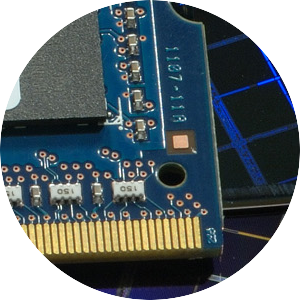One of my propositions in my thesis is:
February 2015 was the last month in which the world’s combined SDRAM production could have been used to cache all the traffic flowing into the Amsterdam Internet Exchange.
The underlying idea is that, if all DRAM vendors would team up (and were really committed to the idea), they could produce DRAM chips to store “The internet” at about the same rate as it is flowing into the AMS-IX. February is special, in the sense that the bandwidth of the DRAM producers is extremely close to the AMS-IX bandwidth (they are only 0.15 % apart).
DRAMeXchange reports 2402 million 2 GiB units were produced, for a total capacity of 5.16 exabits. The DRAM production bandwidth can be calculated from that number:
$$\frac{2402 \cdot 10^6 \cdot 2\cdot 2^{30} / 8~\text{bytes}}{2.419 \cdot 10^6\text{seconds in February}} = 267~GB/s$$So far, it still holds up, as you can see here:
AMS-IX traffic has grown explosively over the past years, and can apparently scale up easily. It hence seems extremely likely to me that DRAM production, which is bound more physical factors, will not be able to overtake it anymore.
Source data:
ams-ix.net DRAMeXchange

